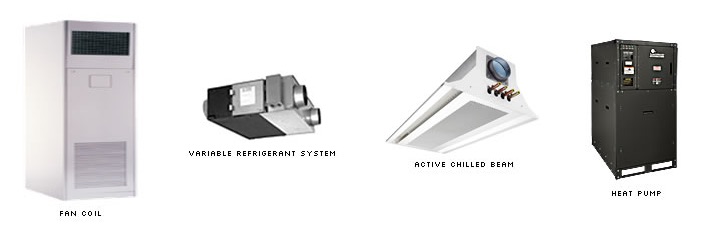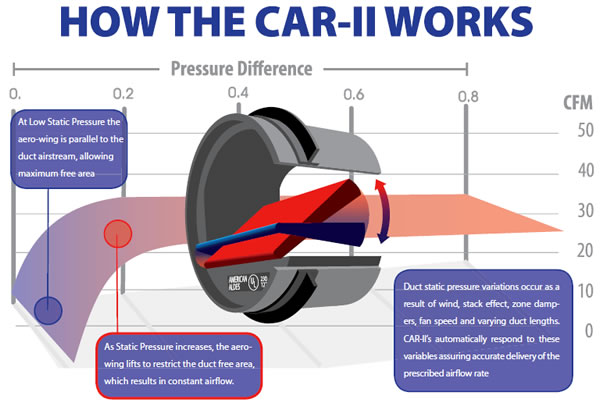Many projects require tight control of ventilation air when coupled with distributed equipment such as fan coils, active chilled beams, VRF units, and heat pumps. Limiting and controlling ventilation is a key to the energy impact of the system.

Many DOAS systems are constant volume. Part of the reason for this is it may not be possible to control the air-flow-regamount of ventilation to each room short of balancing.  For a small office or dorm room, the design may only require 20 or 30 cfm of outside air.
For a small office or dorm room, the design may only require 20 or 30 cfm of outside air.
Unfortunately, no terminal (VAV) box can control down to that low air flow with traditional pitot-type air flow measuring (45 cfm minimum). It is also very expensive to have a terminal box installed for each zone.
Until now …
Consider the American Aldes constant volume air flow regulator. It is a pressure independent control device, but non-motorized and inexpensive.
The CAR-II isn’t deadly accurate (+/- 10%, and +/- 15% below 50 cfm), but certainly accurate enough at small ranges.
Here’s the concept:

What can be done with the product?
Consider installing an inexpensive 2-position control damper in the branch duct before the room unit. In cases where the room is unoccupied (occupancy sensor or switch?), simply shut off the DOAS supply. The DOAS unit that serves these spaces can be built with variable frequency drives, and simply control the pressure in the duct system. CAR-II requires 0.2” of static pressure to operate.
If the building you design has periodically unoccupied spaces, it’s entirely possible that the DOAS can run down to 50% of its volume or less. Now we’re really talking about some significant air side savings. You’ve already downsized the air handling by going with a DOAS system. Now optimize the use of that air!
Cost?
- 4” CAR-II constant volume regulator: $35
- 4” 2-Position damper with 24v actuator: $150
The control damper can be tied into the existing room control. This option would be less expensive than constant volume terminal box with its own controller.
If you have engineering questions related to this or other Air Flow products, contact Tom Gelin at tom@airflowinc.biz or 414-351-7744.


